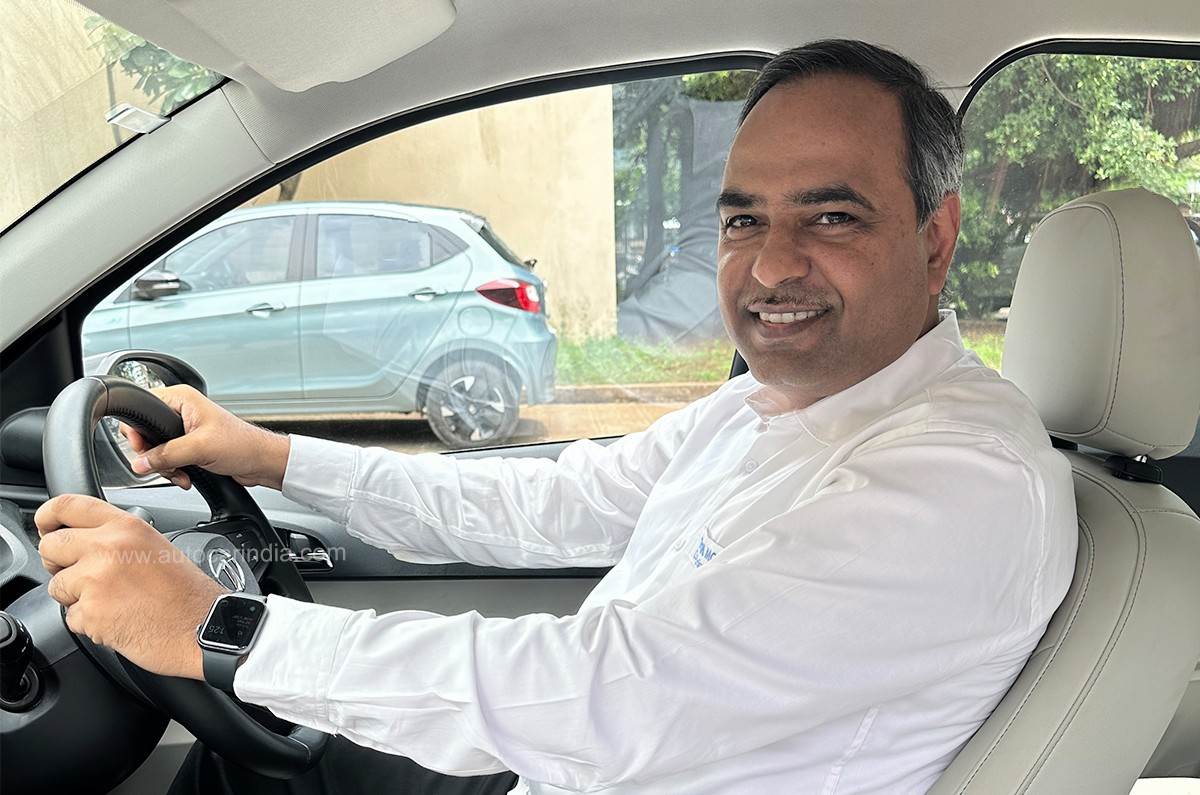The Tiago EV, Tigor EV and Nexon EV have helped Tata achieve this feat.
Tata Motors’ electric division has achieved the spectacular feat of selling 100,000 electric vehicles (EVs) in a span of 5 years. Unlike in the two-wheeler EV industry where start-ups have been the biggest players, in the four-wheeler EV space, Tata Motors, being a legacy brand, has bucked the trend and remains unchallenged so far. The first 10,000 sales took 44 months, while the subsquent 40,000 sales took 15 months and the remaining 50,000 took only nine months.

Shailesh Chandra, MD at Tata Motors, said demand for EVs has crossed brand’s expectations.
Talking about this feat, Shailesh Chandra, managing director of Tata Motors Passenger Vehicles and Tata Passenger Electric Mobility, said in an exclusive interaction with Autocar India, that he did not expect the brand’s electric vehicle business to see such phenomenal growth with demand skyrocketing beyond the brand’s expectations. “The customers felt EVs were a car for the future, not the present and fast forward to today, the customer mindset has transformed much faster than what we have anticipated,” said Chandra.
Tata Tiago EV a new best-seller
Tata Motors dominates the EV market with a market share of more than 80 percent and its latest product, the Tiago EV, has gone on to become the bestselling EV in India within a year of its launch, having sold more than 19,000 units since its deliveries began in January 2023. The Tiago EV’s monthly sales have surpassed even the Nexon EV which recently crossed the 50,000 units sales milestone since its launch in 2020.

Tiago EV’s monthly sales have surpassed the Nexon EV.
Tata got the formula right with Nexon EV by providing enough range for daily use and peppy performance affordable packaged in an SUV body style at reasonable price. The more affordable Tiago has opened up EV ownership to a wider base and sells alongside the Tigor EV. Tata has plans to launch four EVs – Nexon EV facelift, Harrier EV, Punch EV and Curvv EV – within a year.
How Tata grabbed the EV market
Chandra attributed the Nexon EV’s success to two primary reasons. The first being word of mouth that seeded success early for the Nexon EV, thanks to early adopters evangelising the product and swaying fence-sitters.
Chandra says “there was a lot of good word of mouth that gave comfort to the fence-sitters that this is a practical car which can be used daily.” Infact Chandra even pointed that initial buyers were under the impression that EVs could only be used as secondary vehicle. He added “many started using them as their primary car, and then the only car, having actually disposed of their internal combustion engine-powered vehicles when they got the comfort”.
The second reason for rapid pace of EV adoption was government’s policy of five percent GST EVs as compared to 28 percent on ICE as well as individual state EV policies such as waiving off road and registration taxes.
Learning curve
Chandra says Tata Motors took a gamble entering the EV space when it did back in 2018 as the market was not ready for electrification. “When we entered, there were no enablers and we took this bet because it was the right thing to do.” While many manufacturers would go the born-electric vehicle platform route, Tata Motors took the easy and cost-effective step of converting an existing ICE model to an EV, and it only took them a tenth of the investment that a born-electric vehicle would require.

Nexon EV has sold more than 50,000 units since its launch in 2020.
With their first EV – the Tigor EV reserved for fleet models – the initial set of customers had to face certain challenges. Some initial Nexon EV customers also faced teething issues with the new technology, but Chandra mentioned that “the idea was that we respond to those problems fast and do the root cause analysis to have a combination of immediate as well as permanent corrective actions.”
In the city, there is still a high degree of comfort with respect to the range of an EV, but out on the highway, things become a little bit more difficult. This challenge is also “the only reason that is holding people back from EVs,” says Chandra, and charging infrastructure needs to improve at a rapid pace on the highways. But he points out that along with the charging infrastructure, the range of EVs should also improve. “As per our plan, we’re doing it progressively as the battery prices are coming down”, and added that instead of reducing the price of the car, Tata Motors is increasing the range.
Also see:
‘No plans for hybrids, focused on EVs’: Tata Motors chairman
Tata Group likely to procure battery from global supplier Envision AESC
